My current code for printing violins using gganimate looks like this
library(ggplot2); library(gganimate); library(ggpubr)
ggplot(dat2, aes(x=diet, y=bicep, fill=diet)) +
geom_violin() +
scale_fill_manual(values=c("#00AFBB", "#FC4E07")) +
stat_compare_means(aes(label = ..p.format..), paired = FALSE, label.x.npc = 0.5) +
labs(title = 'Week: {frame_time}') +
transition_time(time) +
ease_aes('linear')
Here the p values are printed but they are just overall p values. I would like the p-value to change over time (0, 6 and 12 weeks). In my study the each outcome measurement (bicep) is taken at three different times (0, 6 and 12 weeks or time 1, time 2, time 3), It would be neat if I could show changing p-values at time 0, 6, 12. Here I would use a unpaired t test to compare group means across diet/treatment.
Alternatively, show p-value (paired t test) just at the end where bicep at time '3' is compared to bicep at time '1' for both diets.
How would I go about doing this? Thanks for reading this.
Data Structure
structure(list(code = c(1L, 1L, 1L, 2L, 2L, 2L, 3L, 3L, 3L, 4L,
4L, 4L, 5L, 5L, 5L, 6L, 6L, 6L, 7L, 7L, 7L, 8L, 8L, 8L), diet = c("a",
"a", "a", "b", "b", "b", "a", "a", "a", "b", "b", "b", "a", "a",
"a", "b", "b", "b", "a", "a", "a", "b", "b", "b"), time = c(1L,
2L, 3L, 1L, 2L, 3L, 1L, 2L, 3L, 1L, 2L, 3L, 1L, 2L, 3L, 1L, 2L,
3L, 1L, 2L, 3L, 1L, 2L, 3L), bicep = c(8L, 7L, 7L, 9L, 9L, 9L,
11L, 10L, 9L, 11L, 11L, 12L, 12L, 11L, 10L, 9L, 9L, 9L, 12L,
10L, 8L, 12L, 12L, 12L)), class = "data.frame", row.names = c(NA,
-24L))
Reproducible gganimate code
ggplot(example3, aes(x=diet, y=bicep, fill=diet)) +
geom_violin() +
scale_fill_manual(values=c("#00AFBB", "#FC4E07")) +
stat_compare_means(aes(label = ..p.format..), paired = FALSE, label.x.npc = 0.5) +
labs(title = 'Week: {frame_time}') +
transition_time(time) +
ease_aes('linear')
